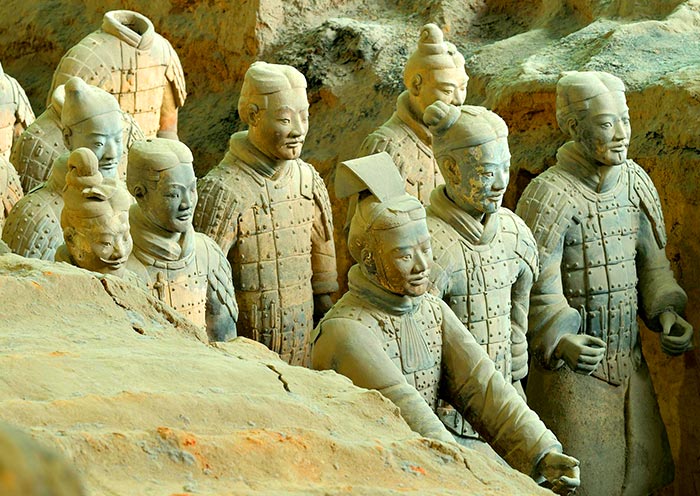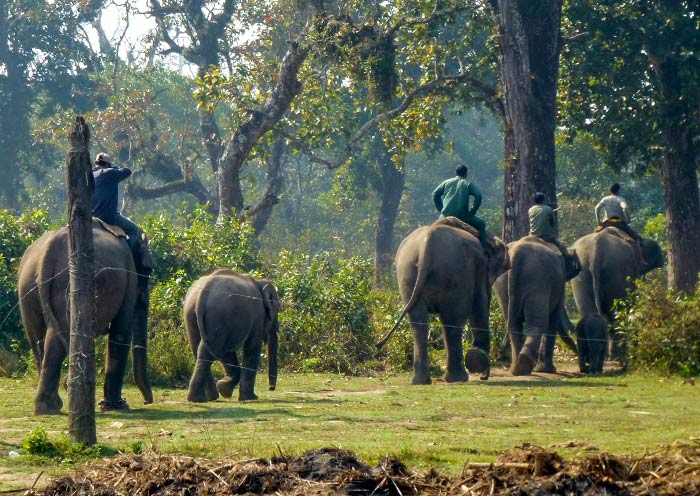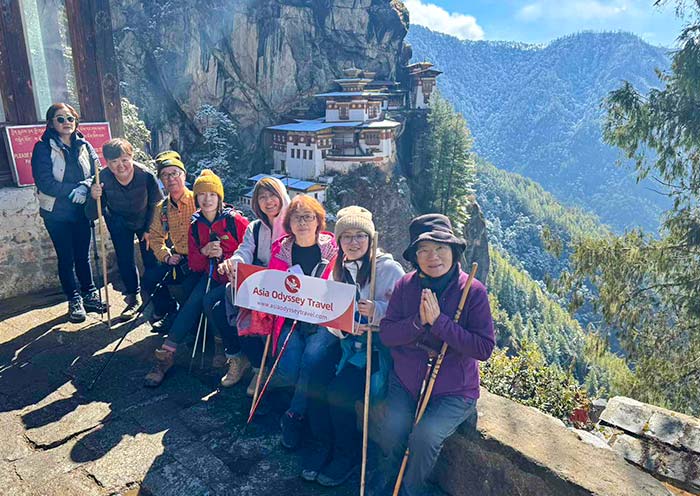- Highlights
- Itinerary
- Price
- Trip Notes
- Accommodation
- Photos
- Reviews
Let's take a Beijing, Tibet, and Nepal Tour in 14 days!
Beijing boasts more international flight connections, serving as an important gateway to Tibet. Before heading to the Roof of the World, it is a good idea to gain a deeper understanding of Chinese culture and history in the imperial capital. Here, you can delve into its rich history at iconic landmarks like the Great Wall and the Forbidden City. Spend three days in Beijing.
Fly from Beijing to Lhasa, seamlessly transitioning into a captivating exploration of Tibet. Witness the awe-inspiring beauty of Mount Everest at Everest Base Camp, explore the vibrant cultures of Shigatse and Lhasa, and immerse yourself in the unique Tibetan landscape. Cross the border at Gyirong, and your journey concludes in Kathmandu, Nepal, where you'll experience captivating cultural highlights, bustling markets, and breathtaking Himalayan scenery.
Experience the best of both worlds by starting your Tibetan adventure in Beijing and enjoying a smooth journey all the way to Kathmandu. We'll help you obtain the necessary permits for Tibet. Book your unforgettable experience at the best price with Asia Odyssey Travel today!
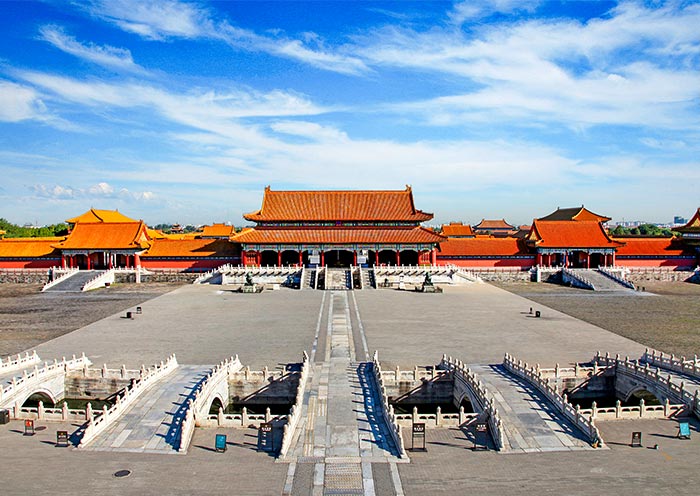

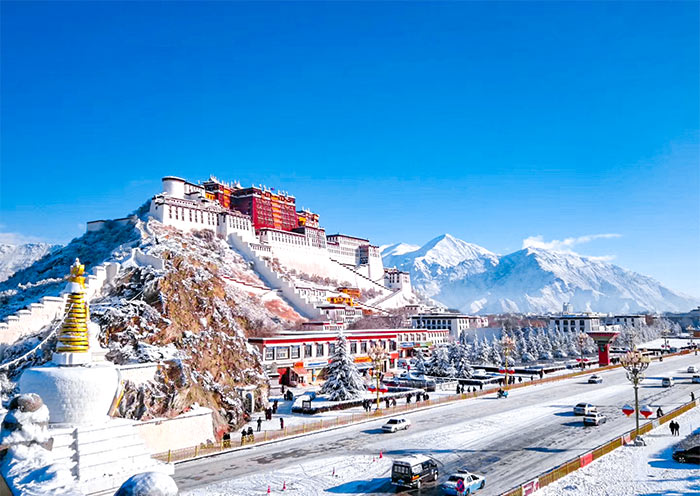

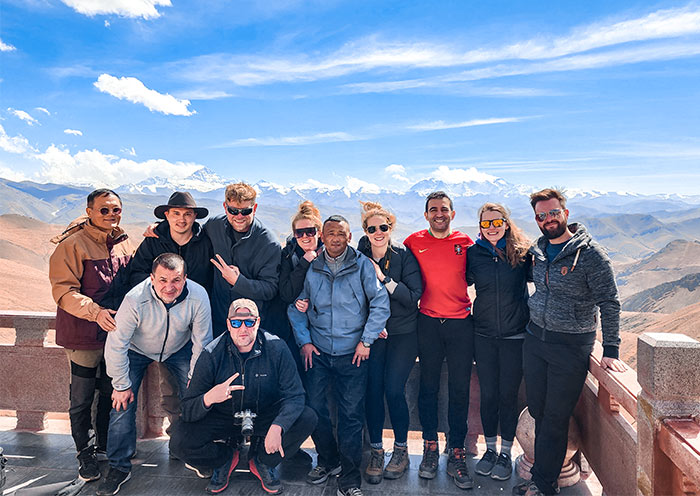

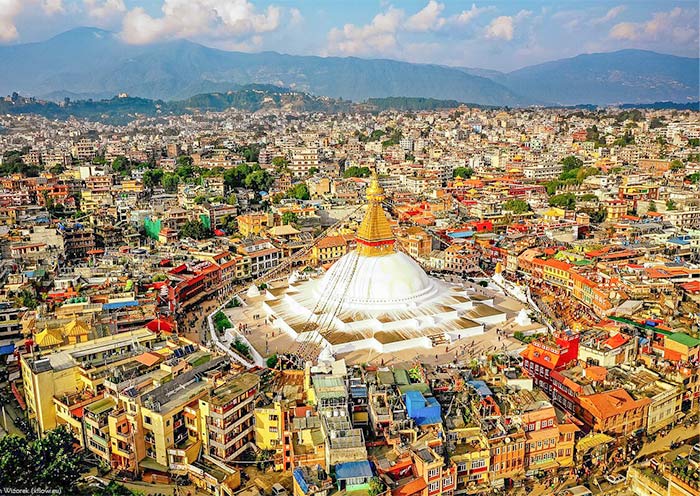
Itinerary at a Glance
Beijing (4 Days)
Forbidden City, Mutianyu Great Wall, Tian’anmen Square, Summer Palace, Bird’s Nest and Water Cube
Lhasa (3 Days)
Jokhang Temple, Barkhor Street, Sera Monastery, Potala Palace, Drepung Monastery
Shannan & Gyantse (1 Day)
Yamdrok Lake, Karola Glacier, Perklor Monastery
Shigatse (0.5 Day)
Tashilunpo Monastery
EBC (1.5 Days)
Rongbuk Monastery, Everest Base Camp, Gyawu La Pass
Gyirong / Gyirong (1 Day)
Gyirong Border to Nepal
Kathmandu (3 Days)
Kathmandu Durbar Square (World Heritage), Swayambhunath Stupa (World Heritage), Pashupatinath Temple (World Heritage), Boudhanath Stupa (World Heritage), Patan Durbar Square, Bhaktapur Durbar Square
Itinerary Day by Day
Nihao! Welcome to Beijing, the capital city of China! Upon your arrival at the airport/train station in Beijing, the tour guide and driver will meet and greet you at the exit, and then escort you to the well-selected hotel in downtown Beijing. The rest of the day is free on your own so you can have a good rest for the jet lag or explore by yourself around your hotel.
Arrival Ideas:
Beijing is well connected by air and high speed rail. There are two airports - Beijing Daxing International Airport and Beijing Capital International Airport operating many international and domestic airlines. Travelers can go to Beijing by air from most cities of China, like Hong Kong, Shanghai, Guangzhou, Chengdu, Xian, Guilin, Hangzhou, Kunming, Wuhan, Xiamen, Guiyang, Chongqing, and Lanzhou. In addition, travelers can take the high speed train to Beijing from Xian (4-5 hours), Shanghai (4.5-6 hours), Zhengzhou (2.5-3 hours), Wuhan (4-5 hours), Harbin (5-5.5 hours), etc.
Free Time Ideas:
You are welcome to ask your tour guide for some useful tips to spend your free time based on your time and interest.


Today you will spend the whole day exploring the ancient citadel Beijing through China’s famous landmarks, epic imperial grandeur and royal gardens.
After breakfast, your guide will pick you up at your hotel and then head to Tian’anmen Square, which is the world’s largest public square and also the symbol of China. It has witnessed many big events in China over the past decades and from here you can take good pictures of Tiananmen Gate showing on CCTV News every day.
Walk across the square and you will visit the might and splendor of the awe-inspiring Forbidden City, the world’s largest palace complex and one-time home to 24 emperors of China. Listed as a world heritage site, Forbidden City has about 500 years’ history, and served as the political and ritual center of China during the Ming (1368-1644) and the Qing (1644-1911) dynasties. With over 8,728 rooms, the Forbidden City is not only China’s largest and best-preserved collection of ancient buildings, but also a city within the city, like the Vatican in Rome. Enter through Meridian Gate and visit along the central axis to ensure you won’t miss any highlighted palaces. You can admire its brilliant architecture and numerous ancient art treasures while listening to your guide and learning more about the emperors’ stories hidden inside the Imperial Palace. Later, if energy permits, take another 15-minute walk up to Jingshan Park, where you can have a magnificent panorama of modern Beijing and princely views over the russet roofs of the Forbidden City.
In this afternoon, drive to the “Museum of Royal Garden” - Summer Palace, which used to be the resort for royal families to flee summer heat. The grounds, temples, gardens, pavilions, lakes, bridges, gate-towers, and corridors are a marvel of landscaping. Enjoy the leisure walk and take your time to appreciate the imperial architectures, hilltop views, and beautiful lakes, which offer a pastoral escape into the landscapes of traditional Chinese painting.


In this morning, you will head northwest of Beijing (about 1.5-2 hours’ drive, 73km) to the Great Wall at Mutianyu. The Great Wall boasts a history over 2,000 years and stretches more than 3,000 miles across several provinces of northern China, making it one of the most impressive ancient masterpieces on the planet. Mutianyu Great Wall is connected with the Jiankou Great Wall in the west and the Gubeikou Great Wall in the east. Mutianyu is the longest and best fully-restored Great Wall with fewer tourists and is also famed for its 23 Ming-era watchtowers and stunning views. Take the cable car up to the 14th watchtower and then enjoy the memorable hiking time on the wall while visiting its western route. With the green pines and cypresses covering the surrounding area, and the winding wall standing majestically on the vast land, you will capture the most stunning natural scenery in this section. Challenge yourselves while climbing up to the 20th watchtower where you could fulfill your Great Wall dream. Cherish the chance and take photos as many as you like!
After the once-in-lifetime experience, head back to downtown Beijing and have the chance to take photos with the exterior of the Bird's Nest (Beijing National Stadium) and Water Cube (Beijing National Aquatics Center). They were both designed for the 2008 Beijing Olympics and used for the 2022 Winter Olympic Games. After that, transfer back to your hotel and have a good rest tonight.
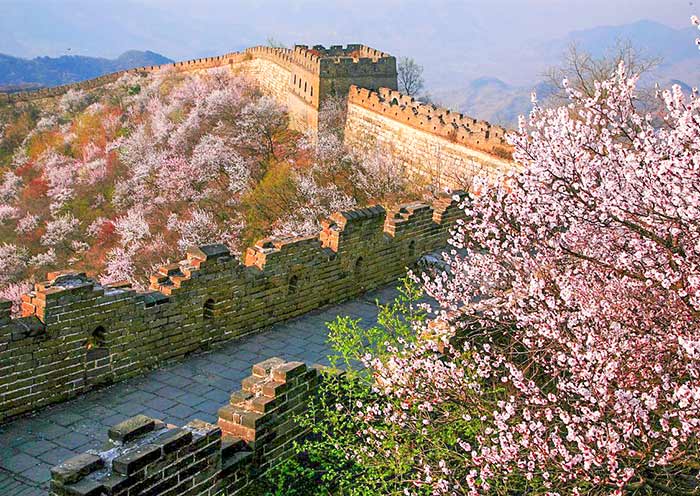

This morning you will head to Temple of Heaven. Located in Beijing's Tiantan Park, the Temple of Heaven is much bigger than the Forbidden City and smaller than the Summer Palace. As a World Heritage, the Temple of Heaven (Taoist temple) is also known for its rigorous symbolic layout, peculiar structure, and magnificent decoration. The Temple of Heaven used to be a place to offer sacrifice to Heaven by 22 Chinese emperors twice a year for good harvests. You can learn more about the grand praying ceremony there, as well as observe the amazing designs such as the Echo Wall and the Triple Sound Stones. Nowadays, it is also a park for local people to do morning exercise and you are welcome to join them.
If there is more time, you can also enjoy the relaxing time exploring the ordinary local life through the old Hutongs. Take a rickshaw tour to travel through the narrow alleys with many featured shops standing on both sides.
In this afternoon, you are free on your own to wander around Beijing and get prepared for the flight to Lhasa in the tomorrow morning. Have a good rest tonight


After breakfast, you will have some free time in Beijing and explore more on your own till your guide escorts you to airport for your flight to Lhasa (about 4.5 hours).
Tashi Delek! Welcome to Lhasa, the capital of the Tibet Autonomous Region! Upon your arrival at the airport in Lhasa, the tour guide and driver will meet you at the exit, and then escort you to the hotel in downtown Lhasa. You can have a good rest to get used to the altitude (3,650m) in your hotel and get ready to explore Lhasa with your guide the next day.
Kind Reminds:
- It is good to avoid altitude sickness by slowing down, keeping warm, drinking water frequently, avoiding showers for the first one or two days, taking it easy, and sleeping well.
- You should always follow your doctor's advice regarding altitude based on your health condition.
- Be sure to let your guide or the hotel staff know whenever you feel unwell or need help. The people there are always willing to help and are good at dealing with altitude sickness.


This day's itinerary features three significant Lhasa landmarks, offering a glimpse into the city's rich cultural and religious heritage.
In the morning, you can walk into Potala Palace (World Heritage), the traditional residence and winter palace of the Dalai Lama (1649-1959). It takes 365 steps from potala gate to reach the Red Palace which is the highest palace in the world at an altitude of 3,700m. Through the principal halls, chapels, and shrines of past Dalai Lamas in the Red Palace, you will be astonished and touched by its remarkable paintings, gorgeous jeweled works, skilled carving, colorful ornamentation, and the mystery stories behind the treasures. Inside the Potala Palace you will meet lots of Tibetan pilgrims who come all the way from afar to this sacred site to pray as their life time destination. You can also ask your guide to share more information about Songtsen Gampo, the 33rd king of Tibet, who first build the Potala Palace in the 7th century for his marriage to Princess Wencheng of the Tang Dynasty. (Note: We may adjust the visit order due to the visiting time of your Potala Palace Ticket. All visitors must visit the Potala Palace with a tour group while staying inside for an hour. No photo inside.)
Later, you will explore Lhasa by visiting Jokhang Temple, a world cultural heritage site renowned for its brilliant architecture, culture, art, and history. Located in the heart of Lhasa for over 1300 years, the Jokhang Temple is an important pilgrimage site for Buddhists from all over the world. Famed as the spiritual center of Tibet, it is said that the Jokhang Monastery was built for King Songtsen Gampo's two brides: Chinese Princess Wencheng and Nepalese Princess Bhrikuti. "Jokhang" means "House of Buddha", and it houses a life-size statue of the 12-year-old Sakyamuni, which is considered a treasure of the Buddhist world. This is why Buddhist pilgrims consider it the holiest destination. The Jakhong temple is also renowned for its beautiful architecture. You can admire the intricate carvings, colorful murals, ornate decorations, and details of the building, which is a masterpiece of Tibetan architecture. Time seems to stand still as you watch people pray in front of the temple during the day and night. (Please note that the visit order may be adjusted based on the reservation of your Jokhang Temple Ticket Reservation.)
Afterward, head back to downtown Lhasa for a walk on busy Barkhor Street near the Jokhang Monastery, which was a place for Buddhists to do a kora (pilgrim circuit) in ancient times. Nowadays, it has become a thriving local market where you can drink a pot of yak butter tea, dress in Tibetan clothes for photos, and pick up some local Tibetan, Nepalese, and Indian handicrafts and souvenirs.


Today, you will have the great opportunity to immerse yourself in the vibrant monastic life of Lhasa with visits to Drepung and Sera monasteries.
First, drive about 35 minutes (10-12km) to visit the Drepung Monastery, which was the largest Tibetan monastery (of the Gelug Sect) in Lhasa. It used to be the palace of the Dalai Lama before he moved to the Potala Palace in the 17th century. Today, it is famous for the Drepung Shoton Festival held each August, where people come to offer yogurt to the monks who have finished their 100 days of meditation. You can also witness the grandest Buddha/Thangka Unfolding Ceremony. Besides the unique architecture and amazing buildings, you can watch monks debating in Tibetan Buddhism, which is vibrant and active with expansive gestures, clapping, and stamping. After visiting the Drepung Temple, you will have about a 2-hour Tibetan culture tour, which includes an introduction, Tibetan incense making, and block printing.
In the afternoon, drive approximately 13km (30-40 minutes) to visit Sera Monastery, which is one of the three great Gelug university monasteries of Tibet. It offers the opportunity to experience Tibetan Buddhism up close. The highlight of Sera Monastery is watching the monks' debate, which takes place around 15:00-17:00 (except on Sundays). The debate is an interesting form of exchange, where one monk acts as the questioner, standing while the answerer or group of answerers sit. The standing monk asks questions and slaps his palms and stomps, each action having a special meaning, such as activating wisdom, and are not meant to be aggressive. You will also have the chance to attend prayer ceremonies, visit meditation halls, and learn about the monastic way of life. It is a must-visit destination to gain insight into the beliefs and practices of Tibetan Buddhism.
After the tour, drive back to Lhasa for accommodation.
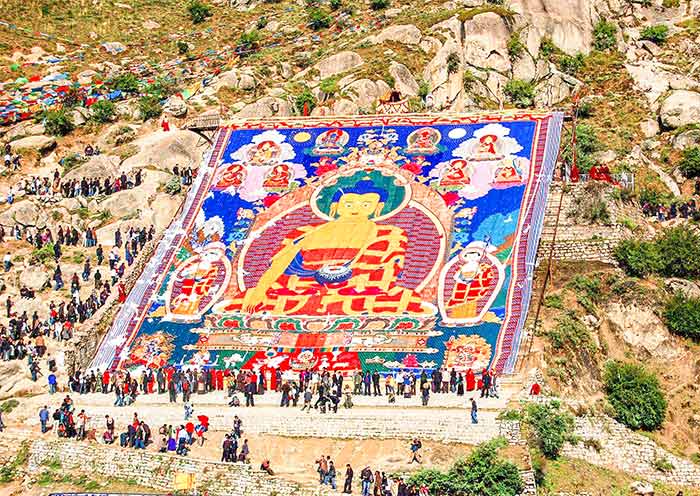

Today, drive about 7.5 hours (270km) from Lhasa to Shigatse (3,850m) via Gyantse (3,950m). You will visit two amazing natural landscapes - Yamdrok Lake and Karola Glacier on the way, then after a visit of Pelkor Monastery in Gyantse, you will reach Shigates for overnight.
In the morning, you will head to the Kampala Pass (4,797 meters) and have a breathtaking view of Yamdrok Lake (a freshwater lake) down below as well as spectacular views of the holy Mt. Nyenchen Khangsar (7,206m) in the distance. It is one of the four largest sacred lakes in Tibet along with Lake Lhamo Latso, Lake Manasarovar, and Lake Namtso. And Lake Yamdrok is said to be able to help Tibetans find the reincarnated soul of the Dalai Lama. You will be happy to see dressed-up Tibetan mastiffs/dogs, goats, and yaks there. It is optional for you to pay 5-10 yuan to pose with and take photos of them, for local Tibetans, it’s a subsidy income for their family.
Then, drive to visit one of the most beautiful Glaciers in Tibet - Karola Glacier, the location of the film Red Valley (Hong He Gu). As one of Tibet's three major continental glaciers, backed by the southern slope of Naiqin Kangsang Peak (7,191 meters), one of the four highest peaks in Tibet, this white glacier is also the source of the eastern part of the Nianchu River. The Karola Glacier (5,012m) is only 300 meters away from the highway connecting Lhasa to Gyantse town. You can view it right off the highway from your car. Sure you can easily walk to the foot of the charming glacier which shape is like a frozen waterfall right above the road and you. Besides the fantastic hike to the Karola Glacier, on the opposite side of the road, you can appreciate the beautiful snow-capped mountain of Mt Kalurong.
Karola Glacier Visiting Notes:
1. The altitude at the glacier scenic spot is about 5,012m, be sure to slow down to avoid altitude sickness.
2. The public toilet at the glacier is very basic.
3. Local people would ask you to take photos with them for a fee. Be sure to ask before taking photos to avoid potential little troubles.
After that, drive on the Friendship Highway( between Tibet and Nepal) to Gyantse, the third largest city of Tibet after Lhasa and Shigates, and visit Pelkor Monastery.
Pelkor Monastery (Palcho Monastery) is an important site for Tibetan Buddhism, as it houses different sects including the Gelug, Sakyapa, and Kadampa. Pelkor Monastery, with a history over 600 years, is also renowned for its impressive architecture, which blends Tibetan, Nepalese, and Han Chinese styles. One of the main attractions of Pelkor Monastery is the Kumbum Stupa (Gyangtse Kumpum), which is a nine-story tower adorned with thousands of images of Buddhas and Bodhisattvas. It is said to be the largest such structure in Tibet. Visitors can enjoy their time by witnessing the daily rituals and prayers of the monks, and have a panoramic view of the surrounding landscape from the top of the Kumbum Stupa (100-Thousand-Buddha Pagoda). You can also catch the far view of Gyangtse Fortress (Gyantse Dzong). After that, drive about 90km to reach Shigates for overnight.




You will get an early start with a visit to Tashilhunpo Monastery. After that, drive to Rongpuk Monastery (5,100m) and Mount Everest Base Camp (5,200m) which is 340km (8h) from Shigatse via a photo stop at Gyawu La Pass (5,200m).
Tashilunpo Monastery is founded by His Holiness the 1st Dalai Lama, Gyalwa Gedun Drup in 1447. In Tashi Lunpo Monastery, you can unveil the traditional seat of successive Panchen Lamas, Tibet's second-highest incarnation. Pay a visit to the ancient tombs of the fourth and tenth Panchen Lama and the chortens, which hold the bones and remains of the sacred Tibetan lamas. Learn more from your guide about Panchen Lamas and Dalai Lamas while appreciating the brilliant religious painting on Tibetan architecture, listening to the Tibetan Buddhism chanting by local monks, and even participating in the kora like locals. Don’t forget to hike up to the top of the monastery and have a stunning bird view of the monastery itself and Shigatse City.
Departing from Shigatse, after about 4.5 hours of driving (240km), you would get your first glimpse of Mt. Everest from the Gyawu La Pass (5,200m), between Lhatse and Shelkar. Apart from Mt. Everest, you will be marveled at the zigzag road that looks winding to the end of the world. On the road, you may see local people biking or hiking all the way to Everest Base Camp, for them reaching the base of the world's highest mountain is a must do goal or holy belief that is worth the effort.
After enjoying the beautiful and unique scenery on the pass with incredibly snow-capped mountain ranges, blue skies, floating high clouds, and endless grasslands, it is time to head to Rongbuk Monastery (about 3.5 hours,122km) which is the highest monastery in the world and the best site to view the north side of Mt. Qomolangma (Mt. Everest), also known as the Third Pole on Earth. With both monks and nuns in residence, Rongbuk Monastery is a must-visit for spiritual travelers, and you will find it to be a photo-worthy destination. It used to be an area of meditation huts, and you can find hermitage meditation caves with a history of over 400 years, dotting the cliff walls all around the monastery and the valley. You can admire the magnificent sunset on Qomolangma's steep north side in good weather. The humble stupa at the monastery is the same one that can be seen on most postcards and posters of Mt. Everest.
Overnight in a tent guesthouse at Rongbuk Monastery or EBC. If you venture out at night, you will be rewarded with a heavenly starry night.
Notes:
1. Travelers can only go as far as the Rongbuk Temple area rather than a few kilometers farther as before. But it’s no big difference in terms of viewing Mt. Everest.
2.Today’s food and lodging is very basic. Due to the high altitude, it is possible that you may have some symptoms of altitude sickness. We recommend that you stay well hydrated, relax and enjoy the beautiful scenery to minimize your symptoms.
3.If you're interested in trekking to EBC from Old Tingri, you can spend 4 days trekking along the relatively open, flat, and safe route. The trek is suitable for almost all people, including underage children, without severe altitude sickness. Taking four days to cover 70km at an average pace of 18km per day is a lifetime experience to walk on the world's highest trekking trail and realize the dream of standing close-up to the towering Mount Everest. Contact us to customize a trekking trip from Old Tingri to Everest Base Camp.
4.When we talk about Everest Base Camp (EBC), we are referring to the area near Rongbuk Monastery that ordinary travelers are allowed to visit. EBC is about 20km from Mount Everest’s summit as the crow flies. From EBC, travelers can view the summit of Mount Everest in fine weather.




Try your luck at witnessing the breathtaking sunrise of Mount Everest in the early morning (Note: The sunrise usually starts around 6:30 am to 7:00 am). After breakfast, head to Everest Base Camp. It is a 4 km hike from Rongbuk Monastery to Everest Base Camp (5,200m), which is the closest place for ordinary tourists to view the world’s summit. (Note: It is optional to take sightseeing bus to EBC. Self-pay for the bus.) Take your time at Everest Base Camp to enjoy the amazing view of the peak of Mount Everest (8,848m), the highest peak in the world.
After the tour, you and your group will leave Mount Everest Base Camp and be transferred to Gyirong Town, where the Gyirong Port is located, via a part of the Friendship Highway, also known as the China-Nepal Highway. On the way, you will get good chance to see the majestic and awe-inspiring Mount Shishapangma, about 120km from Mount Everest and located in the Himalayas near the Nepal-Tibet border. At an elevation of 8,027 meters, Mount Shishapangma is the 14th highest mountain in the world and the only 8,000-meter peak that lies entirely within Tibet. The mountain is known for its striking appearance, with its towering peaks and massive glaciers.
Stay overnight in Gyirong Town.
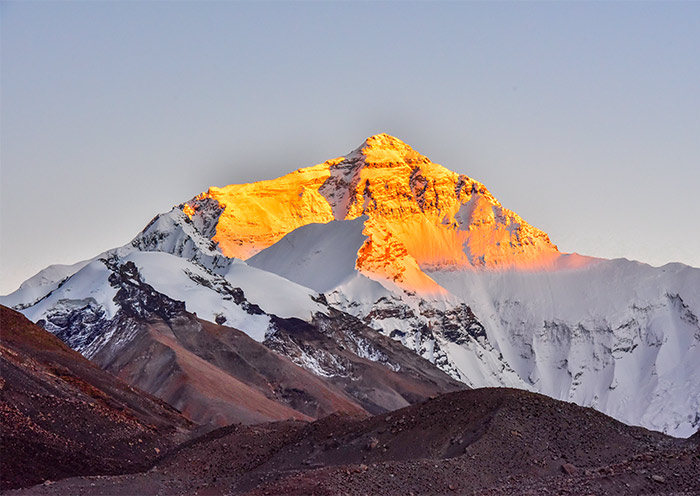

Today, you will across the Gyirong Border and head to Kathmandu(1,400m) via a mountain road. Although it is only 150km from Rashuwaghadi to Kathmandu, it may take more than 6 hours due to the bad road conditions.
Welcome to Kathmandu, the capital of Nepal! Upon arrival, your will be check in at your hotel in Kathmandu. Once you have settled in, you are free to explore the city at your leisure for the rest of the day.
Kathmandu is the largest city in Nepal, located in the Kathmandu Valley, which is surrounded by the majestic Himalayan mountain range. The city boasts a rich cultural and historical heritage, with numerous ancient temples, palaces, and monuments. Its architecture beautifully blends traditional Newari style with modern designs. Kathmandu is renowned for its vibrant street life and bustling markets, such as the Asan Bazaar and the Thamel district (street), offering a wide range of goods and services. The city's rich festival culture, stunning architecture, and friendly people make it a popular destination for travelers from around the world.
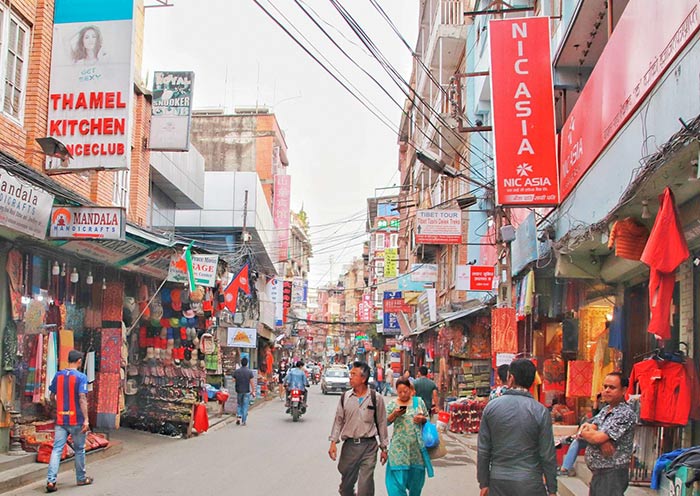
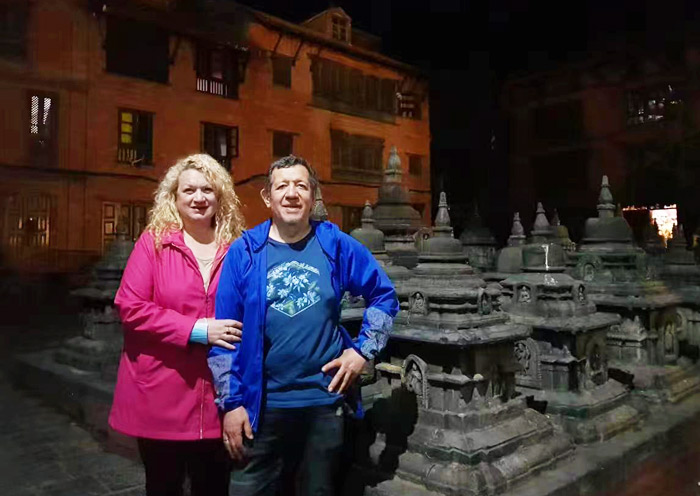
Today, you will explore 3 World Heritage Sites in Kathmandu and Patan. Begin by visiting Kathmandu Durbar Square (World Heritage), one of three royal palace squares in the Kathmandu Valley. You won't miss the Hanuman Dhoka, an iconic red palace adorned with intricate wooden carvings, which served as the residence of Malla Kings for centuries. Most of our guests arm to visit Kumari Ghar (House of the Living Goddess) and Taleju Temple (closely linked to the tradition of the Kumari). Through the Kumari Chowk, you may have the opportunity to catch a glimpse of the Kumari (a young girl worshiped as the living goddess Durga), who is revered by both Hindus and Buddhists in Nepal. The Kumari is selected from a Buddhist family through traditional tests and is believed to be the incarnation of the Goddess Taleju (Durga) until she reaches menstruation age. Dashain Festival (October; a 15-day festival) and Tihar Festival (November; Festival of Lights) offer the best chances of seeing the Kumari in public processions. The Bhairav Statue is also one of the best spots to experience Hindu culture, where you can witness local people worshipping the fearsome god Bhairav, the protector of the city.
Then, move on to Swayambhunath Temple (Stupa), also known as the Monkey Temple due to the swarms of monkeys that inhabit the area. Located on a hilltop on the western edge of Kathmandu, Swayambhunath Stupa (World Heritage) is visible from a distance. You can climb the steep stairs to reach the top of the hill, where you can enjoy panoramic views of Kathmandu Valley and even the Himalayas on clear days. As a must-visit destination in Kathmandu, the stupa is believed to have been built over 2,500 years ago, making it one of the oldest Buddhist sites in the world. The base of the stupa is surrounded by colorful prayer flags fluttering in the wind, carrying prayers and blessings to the heavens. It is a sacred pilgrimage site for both Hindus and Buddhists, signifying the coexistence of diverse beliefs in Nepal while showcasing Newari artistic heritage. Take your time to indulge in the temple's serene and spiritual ambiance, basking in its captivating architecture and embracing its natural beauty.
After that, head to visit Patan Durbar Square (World Heritage), which is 5km away, about a 0.5-hour drive. Located in Patan (Lalitpur), this square is renowned for its ancient architectural masterpieces, including dozens of Buddhist and Hindu temples, pagodas, stone, and wood carvings. Like Kathmandu Durbar Square and Bhaktapur Durbar Square, Patan Durbar Square served as the Royal Palace of the Malla Kings before Prithivi Narayan Shah ****conquered the Three Malla Kingdoms of Kathmandu, Patan, and Bhaktapur in 1769 and consolidated them to found the modern state of Nepal. He also established the capital of Nepal in Kathmandu. Patan is believed to have been established around 2,300 years ago and is the oldest of the three cities that make up the Kathmandu valley. It is a dazzling display of Newari architecture such as Krishna Mandir (21 golden spires and exquisite stonework), Golden Gate (ornate golden doorway), Sundari Chowk (enchanting courtyard).

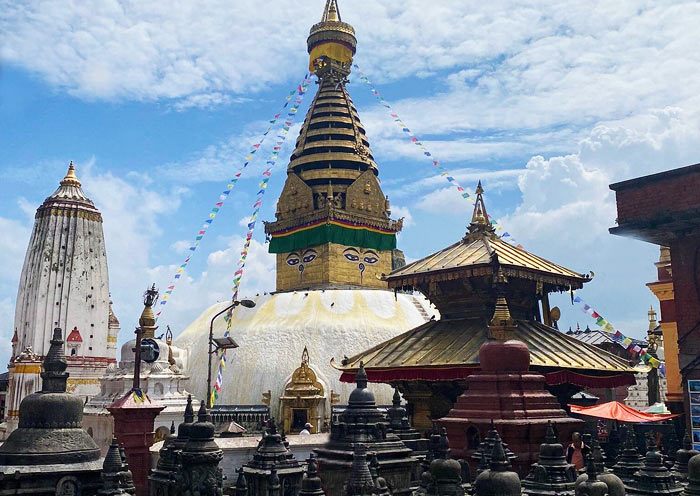
This morning, you will travel about 18 km, taking about 1hour, to reach Bhaktapur (Bhadgaun), also known as An Open Museum. Stepping into Bhaktapur Durbar Square (World Heritage), you will be transported to a bygone era of Malla Dynasty grandeur. It served as the seat of the Malla kings from the 12th to 15th centuries and was the capital of the Greater Malla Kingdom until the 15th century. The square is an assembly of grandiose palaces, courtyards, and temples. Among these, the 55 Window Palace is particularly notable for its intricate wooden carvings and the elaborate balcony that gives the palace its name. The Golden Gate, which serves as the entrance to the main courtyard of the palace, is an exemplary work of repoussé artistry, adorned with figures of deities and mythical creatures. The Nyatapola Temple, which towers above the square with its five-story structure, is the tallest temple in Nepal. Nearby, the Vatsala Temple, with its distinctive stone construction and the famous "bell of barking dogs," adds to the square's spiritual ambiance. Enjoy leisurely walks in this living museum, where festivals, rituals, and daily activities continue to reflect the traditions of the Newar people. Bhaktapur is also famous for its pottery, and if time permits, you can visit Pottery Square to see pots being thrown, dried in the sun, and fired.
Next, drive to visit another World Heritage site called Changu Narayan Temple (7km, 0.5h). Dedicated to Lord Vishnu, this temple is revered as the oldest in Nepal, with origins dating back to the early 4th century. Architecturally, this temple is a masterpiece of Nepalese temple design, showcasing the two-tiered Pagoda style. The temple complex is adorned with intricately carved wood, metal, and stone artworks that depict various deities, as well as scenes from Hindu epics like the Mahabharata and Ramayana. While wandering in the temple, you can read more about Hindu mythology and marvel at the skill of ancient Nepalese artisans and their artworks from the 5th to the 12th century. The hilltop location offers breathtaking views of the Kathmandu Valley.
Then, head back toward Kathmandu (20km, 1h) and pay a visit to Pashupatinath Temple (World Heritage) - a stunning pagoda-style Hindu temple dedicated to Lord Shiva. As the oldest Hindu temple in Nepal, dating back to around 400 B.C., the main temple complex located at the Bagmati River is only open to Hindus. However, non-Hindus can observe the temple from the terraces on the east side of the river. Pashupatinath is often regarded as the Nepali equivalent of Varanasi in India. Originating in the Himalayan Mountains, the Bagmati River is believed to possess purifying qualities for the soul and holds immense sacred significance for both Hindus and Buddhists. Along the banks, there are platforms dedicated to cremation rites. For generations, families have brought the bodies of their loved ones who have passed away to the river, washing their feet and sprinkling drops of water on their faces. It is believed that the river washes away a person's sins and facilitates their journey to heaven. The bodies are then cremated along the riverbanks, and the ashes are scattered into the water. From across the river, you will notice numerous hermit caves to the north of the cremation platforms. For centuries, hermits and ascetics have been meditating in these caves, and this practice continues to this day. Slow down in NEPAL, the place well-known as Never Ending Peace And Love.
At last, you will head to Bodhnath which is a focal point for Tibetan Buddhism in Nepal and home to Boudhanath Stupa (one of the largest Buddhist stupas in the world). You can join the Tibetan pilgrims, and walk around the Boudhanath Stupa (World Heritage) clockwise, turning the prayer wheels under the protective gaze of Buddha's eyes. This is a way to show respect for the Buddha and to accumulate merit. The Boudhanath Stupa is 36 meters tall and 108 meters in diameter, designed as a mandala to represent the Buddhist cosmos. The structure is dominated by a massive dome, at the top of which sits a square tower adorned with the omnipresent eyes of Buddha, gazing serenely in the four cardinal directions. These eyes symbolize the omniscience of Buddha, offering protection and wisdom to all who seek refuge. Surrounding the stupa, prayer flags flutter in the wind, carrying mantras and prayers for peace, compassion, strength, and wisdom far and wide. In the evening, thousands of butter lamps illuminate the plaza surrounding the stupa. Equally fascinating are the surrounding streets, lined with Tibetan monasteries and shops selling religious art, Tibetan handicrafts, and traditional Nepali items.
Stay overnight in Kathmandu.
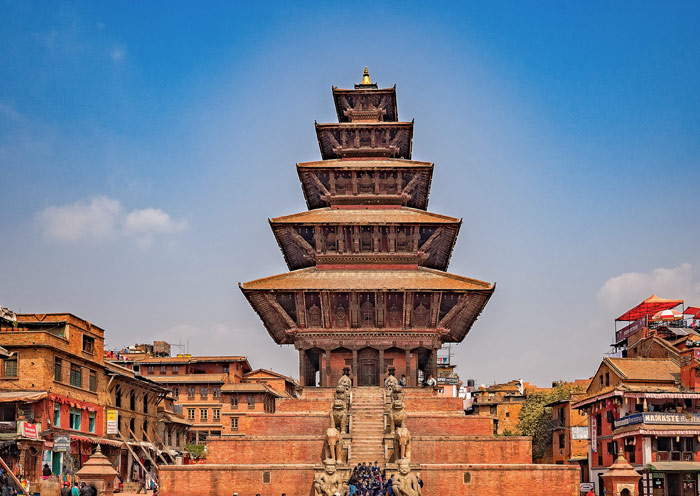

It is time to end your 14-day Beijing Tibet & Nepal tour. You will have some free time in Kathmandu and explore more on your own till your guide escorts you to the airport for your flight to your next destination
Thank you for choosing Asia Odyssey Travel (AOT) for your Nepal tour, we are always here working for you and hope to see you again for your next trip to Asia. Safe journey!
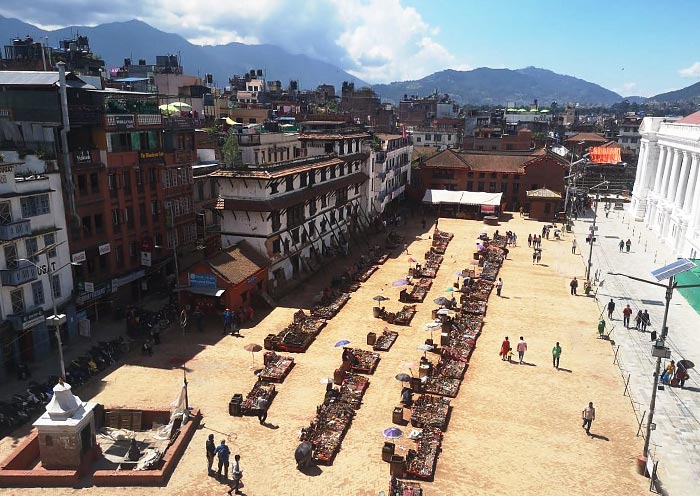
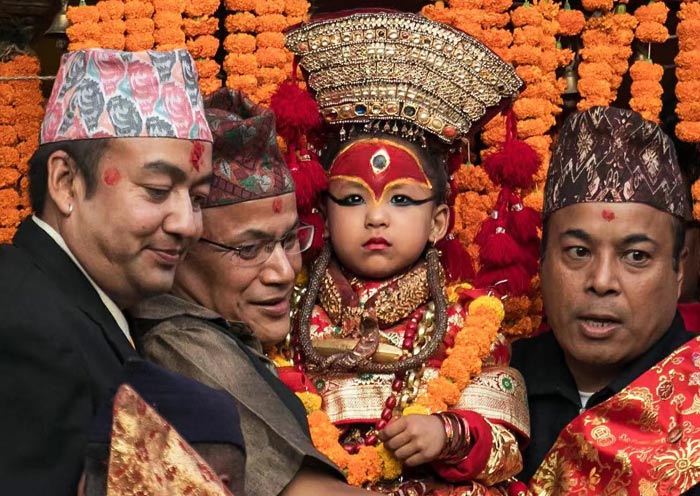
Price: What’s Included & What’s Excluded
What’s Included?
What’s Excluded?
Important Trip Notes for Booking a Private Tibet Tour
All foreign travelers are advised to make their bookings at least one week in advance and send the necessary documents to us for obtaining the permits. However, if you plan to visit Mount Kailash, it is recommended to book at least two weeks in advance, as it may take longer to obtain the necessary permits.
Accommodation & Hotel Condition for Your Tibet Tour
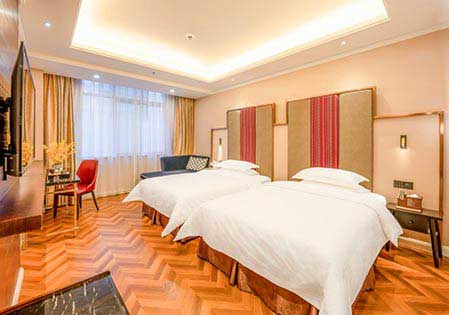
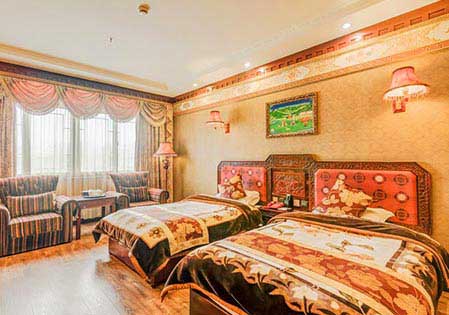
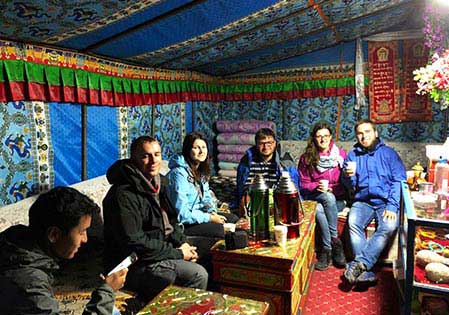
Have a good sleep everyday is very important during your China tour. In a private tour, you can decide on your own which hotel class you want - luxury 5 star, comfortable 4-star or economic 3-star.
All the hotels in each destination we selected are at good location, close to commercial street or tourist attractions. And, all the hotels we use have a business relationship for many years and they have windows, air-conditioners, hot water, showers, wifi... (except for basic accommodation condition when travel to Mount Everest) to ensure you luxury and comfortable sleep experience. The staff can speak English and they will provide you the high quality service. If you have any requirements, you can ask them to help.
Photo Gallery for This Itinerary
Latest Himalaya Tours Reviews from Our Customers

cindy heng
Malaysia
Date of Experience: Sep 07, 2025
Tour Customized by: Abby
You May be Interested in This Tour: Customized Tour

mui m
Vietnam
Highly recommend Asia Odyssey - they planned a fantastic itinerary against our brief for Tibet, Nepal, and Bhutan. Special shoutout to Ms. Mandy who planned our trip, answered all our questions, was incredibly responsive, and was always helpful. She checked in during our trip to make sure we were okay as well. On our trip, our local guides were knowledgeable and kind and our accommodation was comfortable. All-in-all a fantastic experience and highly recommended.
Thank you for a wonderful experience!!
Destination(s): Tibet
Date of Experience: Jun 05, 2025
Tour Customized by: Mandy
You May be Interested in This Tour: Customized Tour

Bhawani Thangaratnam
Malaysia
Date of Experience: Aug 31, 2025
Tour Customized by: Steven
You May be Interested in This Tour: Customized Tour
Price: Request
(Based on a private tour for two people. Price varies depending on program, travel date, number of people.)
Free Enquiry! You don’t need to pay for the reservation.
- United States (+1)
- Australia (+61)
- Singapore (+65)
- Malaysia (+60)
- Philippines (+63)
- Canada (+1)
- Italy (+39)
- Indonesia (+62)
- United Kingdom (+44)
- Spain (+34)
- Mexico (+52)
- Hong Kong (+852)
- Thailand (+66)
- United Arab Emirates (+971)
- New Zealand (+64)
- South Africa (+27)
- Germany (+49)
- Brazil (+55)
- India (+91)
- France (+33)
- Vietnam (+84)
- The Netherlands (+31)
- Saudi Arabia (+966)
- Ireland (+353)
- Argentina (+54)
- Switzerland (+41)
- Romania (+40)
- Pakistan (+92)
- Japan (+81)
- Portugal (+351)
- Bangladesh (+880)
- South Korea (+82)
- Puerto Rico (+1)
- Türkiye (+90)
- China (+86)
- Belgium (+32)
- Qatar (+974)
- Greece (+30)
- Taiwan (+886)
- Austria (+43)
- Poland (+48)
- Israel (+972)
- Chile (+56)
- Sri Lanka (+94)
- Nigeria (+234)
- Peru (+51)
- Colombia (+57)
- Hungary (+36)
- Nepal (+977)
- Denmark (+45)
- Bulgaria (+359)
- Norway (+47)
- Slovenia (+383)
- Sweden (+46)
- Kuwait (+965)
- Costa Rica (+506)
- Ecuador (+593)
- Venezuela (+58)
- Malta (+356)
- Croatia (+385)
- Tunisia (+216)
- Czechia (+420)
- Mongolia (+976)
- Bahrain (+973)
- Mauritius (+230)
- Papua New Guinea (+675)
- Cambodia (+855)
- Dominican Republic (+1)
- Luxembourg (+352)
- Finland (+358)
- Guatemala (+502)
- Myanmar (+95)
- Maldives (+960)
- Slovakia (+421)
- Laos (+856)
- Serbia (+381)
- Brunei (+673)
- Oman (+968)
- Macao (+853)
- Panama (+507)
- Morocco (+212)
- Jordan (+962)
- Georgia (+995)
- Fiji (+679)
- Bolivia (+591)
- Lithuania (+370)
- Bahamas (+1)
- Cyprus (+357)
- Latvia (+371)
- Bhutan (+975)
- Iraq (+964)
- Iran (+98)
- Kenya (+254)
- Jamaica (+1)
- Zimbabwe (+263)
- Azerbaijan (+994)
- Uruguay (+598)
- Estonia (+372)
- Andorra (+376)
- Cameroon (+237)
- Ghana (+233)
- Kazakhstan (+7)
- Nicaragua (+505)
- Egypt (+20)
- Russia (+7)
- Albania (+355)
- Réunion (+262)
- Montenegro (+382)
- Algeria (+213)
- Afghanistan (+93)
- Martinique (+596)
- Uganda (+256)
- Honduras (+504)
- North Macedonia (+389)
- Trinidad and Tobago (+1)
- Suriname (+597)
- Antigua and Barbuda (+1)
- Zambia (+260)
- Ukraine (+380)
- Armenia (+374)
- Barbados (+1)
- Belarus (+375)
- Palestine (+970)
- Lesotho (+266)
- Moldova (+373)
- Ethiopia (+251)
- French Polynesia (+689)
- Gambia (+220)
- Guam (+1)
- Gibraltar (+350)
- Isle of Man (+44)
- New Caledonia (+687)
- El Salvador (+503)
- Comoros (+269)
- Seychelles (+248)
- Chad (+235)
- Samoa (+685)
- Cook Islands (+682)
- Palau (+680)
- Paraguay (+595)
- DR Congo (+243)
- Solomon Islands (+677)

